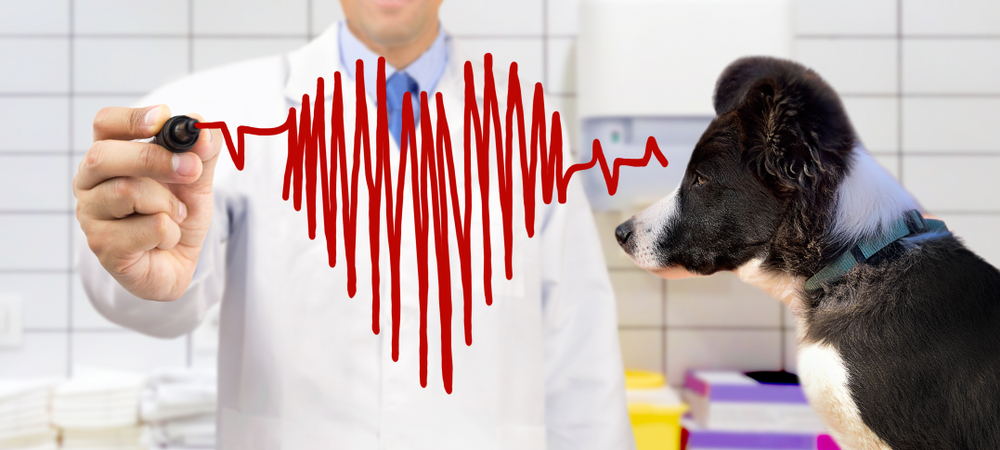The Duty of Ultrasound and CT Scan in Modern Vet Practices: Insights From Experienced Professionals
In modern veterinary methods, ultrasound and CT scans substantially enhance diagnostic abilities. These imaging techniques give vital insights into animal health, directing therapy decisions. Experienced specialists identify the special advantages of each method. Ultrasound uses real-time evaluations, while CT checks supply intricate physiological details. Comprehending their applications and functions increases vital inquiries about their impact on patient results and the future of vet diagnostics. What insights can be acquired from their integrated usage?
Recognizing Ultrasound in Veterinary Medication
Ultrasound is a vital analysis device in veterinary medication, using a non-invasive approach to picture interior structures. This imaging technique employs high-frequency sound waves to create real-time photos of cells and body organs, allowing veterinarians to evaluate problems without medical treatment. Typical applications include evaluating the heart, liver, kidneys, and reproductive organs, as well as monitoring pregnancies.The treatment is reasonably quick and can be executed in numerous setups, making it an obtainable choice for vets. Unlike radiography, ultrasound gives detailed info concerning soft cells and blood flow, which is vital for accurate diagnoses.Veterinary experts count on ultrasound to discover problems such as tumors, cysts, and fluid build-up. Its ability to direct biopsies and various other procedures additionally boosts its utility in clinical technique. By offering a secure and reliable method to analyze interior anatomy, ultrasound has come to be a cornerstone of modern vet diagnostics.
The Advantages of CT Scans for Pet Diagnostics
CT checks offer significant advantages in veterinary diagnostics by giving enhanced accuracy in determining internal conditions (CT Scans For Animals). As a non-invasive imaging strategy, they guarantee the safety and comfort of animals throughout examinations. Furthermore, CT scans facilitate a thorough evaluation of inner structures, permitting more effective therapy preparation
Enhanced Analysis Accuracy
Improvements in imaging modern technology have considerably improved analysis accuracy in vet medicine, specifically via the use of CT scans. These scans provide detailed cross-sectional pictures of a pet's internal frameworks, enabling veterinarians to recognize problems with precision. The high resolution and three-dimensional capabilities of CT imaging facilitate the discovery of conditions such as lumps, fractures, and internal bleeding that could be missed out on with typical imaging approaches. Additionally, CT scans can assist in pre-surgical planning by supplying an extensive view of anatomical relationships. This degree of detail not only enhances the accuracy of diagnoses yet also help in customizing effective therapy strategies. The assimilation of CT innovation right into vet techniques is transforming the landscape of pet healthcare, enhancing outcomes for patients.
Non-Invasive Imaging Technique
The introduction of non-invasive imaging strategies has revolutionized pet diagnostics, with CT scans arising as a noticeable tool in veterinary practices. These scans provide high-resolution, cross-sectional photos of an animal's interior frameworks, enabling vets to assess complicated conditions without the requirement for intrusive procedures. The benefits of CT scans include their ability to find growths, cracks, and internal blood loss with remarkable accuracy. Additionally, they help with the evaluation of soft cells and organs, boosting diagnostic abilities. The speed of CT scanning allows quick decision-making, which is important in emergency circumstances. By minimizing tension and discomfort for the animal, CT scans add to a much more gentle strategy to diagnostics, inevitably improving therapy results and progressing veterinary treatment.
Comprehensive Internal Evaluation
An extensive internal analysis is necessary for precise diagnosis and effective treatment in vet medication. CT checks deal significant benefits in this regard, giving in-depth cross-sectional pictures of an animal's internal structures. This sophisticated imaging modality boosts visualization of complicated anatomical regions, allowing vets to recognize problems such as tumors, fractures, and internal bleeding with higher precision. In addition, CT checks assist in the assessment of problems that may be challenging to diagnose with typical methods. The speed and accuracy of CT imaging likewise add to prompt interventions, boosting patient end results. As veterinary practices significantly include CT modern technology, the advantages of substantial interior evaluations end up being noticeable, enhancing the importance of this tool in modern veterinary diagnostics.
Contrasting Ultrasound and CT Imaging Techniques
While both ultrasound and CT imaging offer necessary roles in veterinary diagnostics, each strategy supplies distinct advantages and limitations that can influence professional decision-making. Ultrasound is especially valued for its real-time imaging capacities, permitting veterinarians to observe dynamic physical procedures. This method is non-invasive, portable, and does not include ionizing radiation, making it a much safer choice for both pets and medical professionals. Ultrasound might have limitations in imagining certain anatomical frameworks or deep tissues.Conversely, CT imaging supplies in-depth cross-sectional sights of the body, permitting for precise localization of irregularities. It stands out in reviewing facility body organs and frameworks, specifically in the thorax and abdomen. CT scans need sedation or anesthesia in several situations and involve exposure to ionizing radiation. Eventually, the selection between ultrasound and CT depends upon the details professional scenario, the location of passion, and the urgency of the analysis needs.
Situation Studies: Successful Diagnoses Through Imaging
Instance studies highlight the significant enhancements in analysis precision attained through advanced imaging innovations like ultrasound and CT scans in veterinary practices. These improvements not only boost the discovery of various conditions yet also help with prompt and effective treatment plans. Examining details cases can highlight the transformative effect of these imaging strategies on vet medicine.
Diagnostic Precision Improvements

Imaging Innovation Advancements
As vet imaging innovation remains to evolve, its effect on analysis capabilities becomes progressively obvious. Recent study highlight the effective application of advanced ultrasound and CT scan techniques in identifying complicated conditions. As an example, a veterinary center utilized high-resolution CT scans to detect a rare kind of lung cancer in a pet dog, which standard imaging had actually missed. In a similar way, an ultrasound examination revealed an abdominal mass in a feline, motivating timely medical treatment and a positive end result. These advancements not just improve diagnostic precision yet additionally enable veterinarians to devise targeted therapy strategies. By leveraging advanced imaging modern technologies, vet specialists are substantially enhancing person treatment, resulting in much more reliable administration of numerous health and wellness conditions in pets.
The Role of Imaging in Emergency Situation Veterinary Care
Imaging plays a vital function in emergency situation vet treatment, supplying veterinarians with important info needed to make quick, informed decisions. In immediate scenarios, strategies like ultrasound and CT scans make it possible for specialists to rapidly analyze a pet's interior structures, identifying important conditions such as interior blood loss, fractures, or organ problems. These imaging methods permit for real-time assessments, facilitating timely interventions that can be life-saving. Ultrasound is important for evaluating soft tissue injuries and conditions like liquid accumulation, while CT checks offer in-depth photos of intricate physiological structures, essential for identifying injury cases. The rate and accuracy of these imaging techniques enhance the veterinarian's capacity to develop efficient treatment plans, ensuring the very best feasible end results for their clients. The assimilation of advanced imaging technologies right into emergency veterinary methods is not just valuable yet significantly needed, as it improves diagnostic abilities and improves general pet care during important minutes.

Training and Experience in Vet Imaging
Advanced imaging methods such as ultrasound and CT scans are necessary for efficient vet care, the successful implementation of these modern technologies heavily depends on the training and proficiency of vet specialists. Competent use of imaging tools requires thorough understanding of composition, pathology, and the principles underlying each modality. Vet professionals must go through specialized training to precisely analyze imaging outcomes, which is important for detecting conditions and planning treatment.Certifications and proceeding education in vet imaging boost the skills of experts, allowing them to remain upgraded with technological innovations. Cooperation in between radiologists and veterinarians typically leads to improved diagnostic precision, as professionals can give insights right into complicated situations. In enhancement, practical experience in dealing with imaging devices fosters self-confidence in its application. Eventually, the high quality of vet imaging solutions is directly correlated to the level of training and knowledge had by the specialists using these necessary analysis devices.
Future Patterns in Diagnostic Imaging for Animals
With the quick advancements in innovation, veterinary analysis imaging is poised for considerable evolution in the coming years. Arising fads suggest a change towards more mobile and obtainable imaging modalities, such as portable ultrasound devices, which could improve area diagnostics. In addition, the combination of artificial intelligence is expected to reinvent picture evaluation, permitting quicker and much more accurate analyses of results.Moreover, improvements in 3D imaging techniques and calculated tomography will certainly you can try these out provide veterinarians with more thorough sights of pet makeup, resulting in enhanced therapy plans. Virtual fact modern technology might also play a function in medical planning and education, giving veterinarians an unique perspective on complex cases.As telemedicine remains to grow, remote assessments promoted by diagnostic imaging will certainly become more common, enabling professionals to assist family doctors in real-time. Overall, these fads are set to improve the effectiveness and efficiency of veterinary treatment, inevitably enhancing pet end results.
Often Asked Concerns
Just How Much Do Ultrasound and CT Scans Price in Veterinary Facilities?
The expenses of ultrasound and CT scans in veterinary centers typically vary from $300 to $1,500, relying on aspects such as location, facility type, and particular procedures needed for the animal's medical diagnosis and treatment.

Are There Any Threats Connected With Ultrasound and CT Checks for Family Pets?
Ultrasound and CT scans typically present very little risks to family pets. Potential concerns include sedation reactions and direct exposure to anesthetics. Veterinarians carefully evaluate each situation to mitigate any dangers related to these diagnostic treatments
How Long Do Ultrasound and CT Procedures Usually Take?
Ultrasound procedures usually take about half an hour to an hour, relying on the intricacy. CT scans, being more in-depth, normally call for thirty minutes to 90 mins, consisting of prep work and healing time for the pet dog.
Can All Veterinarians Perform Ultrasounds and CT Scans?
Not all veterinarians can execute ultrasounds and CT scans. Specialized training and certification are often called for to guarantee proficiency in these innovative imaging techniques, which might restrict their accessibility to vets with added certifications and sources.
What Kinds Of Pets Benefit Many From These Imaging Techniques?
Particular pet species, specifically pet cats and dogs, benefit substantially from ultrasound and CT scans. These imaging methods boost analysis accuracy for conditions like lumps, interior injuries, and organ abnormalities, bring about enhanced treatment results and person treatment. The high resolution and three-dimensional capabilities of CT imaging help with the discovery of problems such as growths, fractures, and inner bleeding that could be missed with conventional imaging techniques. Case research studies highlight the substantial enhancements in diagnostic precision attained via innovative imaging innovations like ultrasound and CT scans in vet methods. Improving diagnostic accuracy in vet techniques has been substantially aided by improvements in imaging innovations such as ultrasound and CT scans. Advanced imaging strategies such as ultrasound and CT scans are important for reliable veterinary care, the successful execution of these modern technologies heavily depends on the training and expertise of vet professionals. Veterinary experts need to go through specialized training to accurately interpret imaging results, which is see this site essential for identifying problems and planning treatment.Certifications and continuing education and learning in veterinary imaging improve the skills of experts, enabling them to stay upgraded with technical developments.
Comments on “How to Tell if Your Pet Needs an Ultrasound For Dogs}”